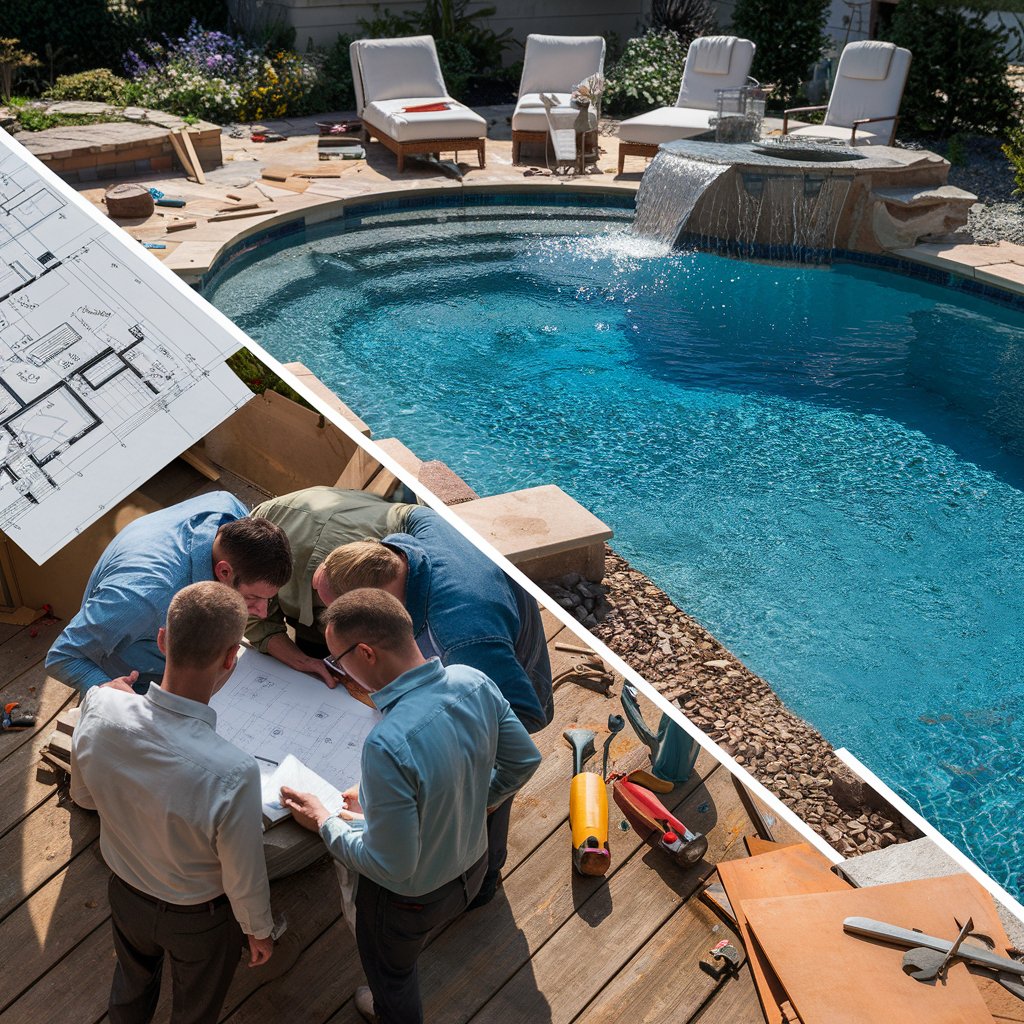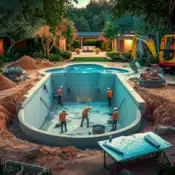Top Design and Construction Tips From Expert Inground Pool Builders

Top Design and Construction Tips From Expert Inground Pool Builders
In the realm of design and construction, the creation of an inground pool presents a unique challenge that requires a masterful blend of aesthetic creativity and engineering expertise. Expert inground pool builders, with their vast industry experience, offer invaluable insights and best practices that can be instrumental in facilitating a seamless design and construction process, thus ensuring a result that not only meets but exceeds client expectations.
From the initial conceptualization of design to the intricate steps involved in the construction process, these professionals can provide comprehensive advice to address the many complexities of building an inground pool. But what specific tips do these experts offer? And how can these tips be applied effectively in your pool construction project? The answers to these questions will certainly pique your interest, inviting you to further explore this topic.
Essential Inground Pool Design Tips
Understanding the fundamentals of inground pool design is paramount to creating a functional, aesthetically pleasing, and long-lasting swimming pool that caters to your specific needs and preferences. Expertise in hydrodynamics, soil mechanics, and aesthetics is essential to ensure a smooth construction process and a high-quality finished product.
Careful consideration must be given to the pool's shape and depth, the placement of entrances and exits, and the choice of materials. The inclusion of features such as lighting, heating, and filtration systems also requires meticulous planning.
A well-designed inground pool not only enhances the beauty and value of your property but also provides a space for relaxation, exercise, and entertainment. Remember, good design is the cornerstone of any successful inground pool project.
Key Construction Advice for Inground Pools
Navigating the construction phase of an inground pool builders requires a comprehensive understanding of crucial steps. This includes excavation, steel installation, plumbing, and concrete application to ensure a sturdy and lasting structure.
Excavation must be precise to accommodate the pool design, avoiding potential ground instability. The steel framework should then be meticulously installed, acting as the pool's skeletal foundation. Plumbing is next, requiring professional installation to ensure efficient water circulation and filtration.
Finally, concrete application forms the pool shell, a process requiring expert timing and skill for a smooth finish. These stages should be approached with patience and precision, liaising closely with experienced builders to ensure the pool's quality and longevity.



